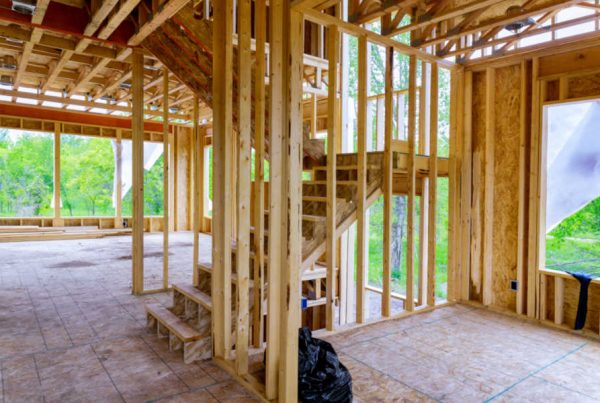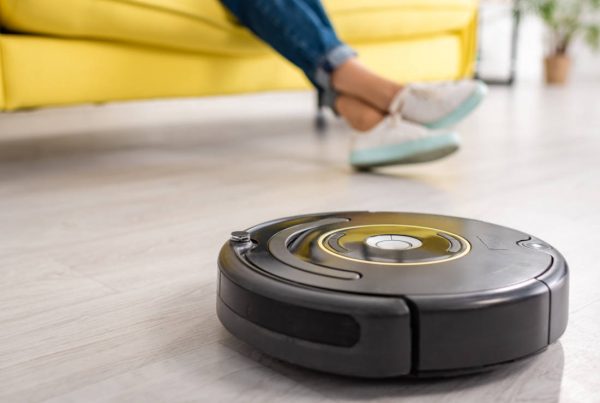One in five Australians have some form of disability, and 4.4% of those use a wheelchair in their day-to-day life. While the precise number of wheelchair users in Australia isn’t known, the figure is in the hundreds of thousands.
As a result, governments across all levels invest a considerable sum in preparing public spaces for wheelchair use. From disabled parking to access ramps and bathroom grab rails, a range of state-funded infrastructure makes public places more accessible for wheelchair users.
But when it comes to private property, it’s up to the individual to ensure their home is suitable for wheelchair use. Although some government-funded subsidies are available, the homeowner (or their loved ones) must act as project manager, planner, and investor—and in some cases, handyman—when modifying their home.
But it’s well worth the effort and expense. Home modifications not only improve accessibility; they help the wheelchair user achieve a sense of independence. This renewed autonomy enables a mobility-impaired homeowner to better manage their mental health, which is one of the biggest issues facing wheelchair users in Australia.
Whether you’ve recently begun using a wheelchair or you’re moving into a new, unmodified home, it’s vital to prepare the property for your mobility needs. From quick DIY fixes to complex engineered projects, there’s a broad range of ways you can modify a home.
In this post, we’re covering the top mobility modifications for wheelchair users across every area of a home. We’ll also discuss the relevant government-funded programs to help you obtain some much-needed financial support.
Entryways
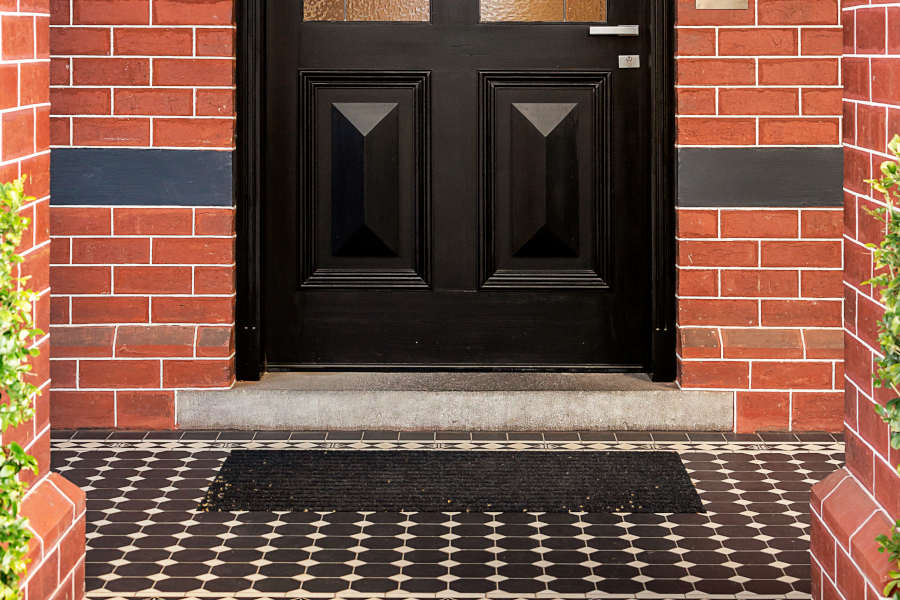
Many standard internal and external doors aren’t quite wide enough for wheelchair users, so you may need to widen yours. In general, a width of 80 cm will provide sufficient accessibility, although people with larger wheelchairs may require up to 90 cm.
In some situations, you’ll have no choice but to remove the entire doorway and replace it with a wider alternative. However, there are a few workarounds. For example, Z-shaped hinges put the door flush with the wall, which adds a few extra inches of wriggle room. Reverse swinging doors and automatic sliding doors can also provide a viable alternative.
For internal doorways, one option is to remove the door and the frame entirely to free up extra space. If going down this route, consider installing a curtain to maintain privacy between rooms.
Push bars are easier to use than standard door knobs. Whichever option you choose, ensure they’re low enough to remain within easy reach—around 90 cm from the floor is ideal.
Aside from widened doors, your entryways need a flat surface to facilitate wheelchair use. If there are any little bumps or steps, install a suitable wheelchair ramp. Mobility shops around Australia sell a wide range of ramps for various situations, most of which are adjustable to suit your specific entryway.
Flooring
 Hardwood, vinyl, laminate, and ceramic are the best flooring types for wheelchair use. These smooth, even surfaces create minimal wheel resistance, making it easier to zip around the home.
Hardwood, vinyl, laminate, and ceramic are the best flooring types for wheelchair use. These smooth, even surfaces create minimal wheel resistance, making it easier to zip around the home.
Carpet isn’t ideal as it takes extra effort to move a wheelchair across the squishy fibres. However, ripping up your carpet and laying down brand new flooring is an expensive endeavour—the cost may outweigh the benefit. If you’ve got budget constraints, try living in the carpeted home for a few weeks to gauge how problematic it is for you. Plastic floor mats can aid mobility in high-traffic areas.
Regardless of your flooring type, remove all your rugs as these inhibit movement and may get stuck in the wheels. Also, de-clutter your floor space by eliminating obstacles, especially in cramped or high-traffic areas such as the hallways. The more room you have to move about, the more comfortable you will be at home.
Bathroom
 The bathroom can be the most expensive room to modify, but it’s also the most important. Without some essential accessibility modifications, a wheelchair user will find it challenging to maintain personal hygiene and put themselves at risk of falls.
The bathroom can be the most expensive room to modify, but it’s also the most important. Without some essential accessibility modifications, a wheelchair user will find it challenging to maintain personal hygiene and put themselves at risk of falls.
Aim for 60-90 cm of clearance to enable safe transfers from the wheelchair to the toilet seat. For the same reason, install some grab rails on the adjacent walls and ensure the toilet seat is about 40 cm from the ground—a wall-mounted toilet is ideal.
If replacing your toilet isn’t an option, you can install an elevated toilet seat to increase the height. These simple, cost-effective solutions can include handrails on each side.
The best bathing modification is the roll-in (walk-in) shower, which has no door, a flat entryway, and a recessed drain with a slight gradient. However, this premium option, which is often found in five-star hotels, comes with hefty renovation costs.
The barrier-free shower door is another option; it sits flush with the floor without a lip or step. In either case, put your shower caddy about 90 cm from the ground and install a wall-attached or freestanding shower seat.
An alternative is to modify your bathtub. Grab rails aid transfers, while a bath lift and swivel chair make the task even easier. Another option is a tub bench, which spans the breadth of both sides. Then there’s the tub cut modification, which includes a custom-built sealed door.
Finally, roll-under sinks let you slide beneath the basin to wash your hands or brush your teeth. Low cabinets with pull-out draws simplify the storage process.
Bedroom
 The average wheelchair sits about 50 cm off the ground. Therefore, aim for a bed frame and mattress combo at approximately the same height. If you have to climb or fall onto the mattress, you’ll risk injuring yourself. Furthermore, a bed lift works similarly to a bathtub lift to facilitate easier transfers.
The average wheelchair sits about 50 cm off the ground. Therefore, aim for a bed frame and mattress combo at approximately the same height. If you have to climb or fall onto the mattress, you’ll risk injuring yourself. Furthermore, a bed lift works similarly to a bathtub lift to facilitate easier transfers.
Adjustable beds let you raise or lower the top end through a motorised mechanism. This functionality makes it easier to sit upright and may improve posture while asleep.
Keep a decent amount of clearance beside the bed to facilitate hassle-free transfers—around 60-90 cm will do. As always, low-lying storage with pull-out draws is the best option for wheelchair users. Keep all your everyday essentials near the bed for easy access.
Closet racks often sit too high, so consider having them lowered. Installing lower door handles or removing the closet doors altogether can make accessing your clothes easier.
Kitchen
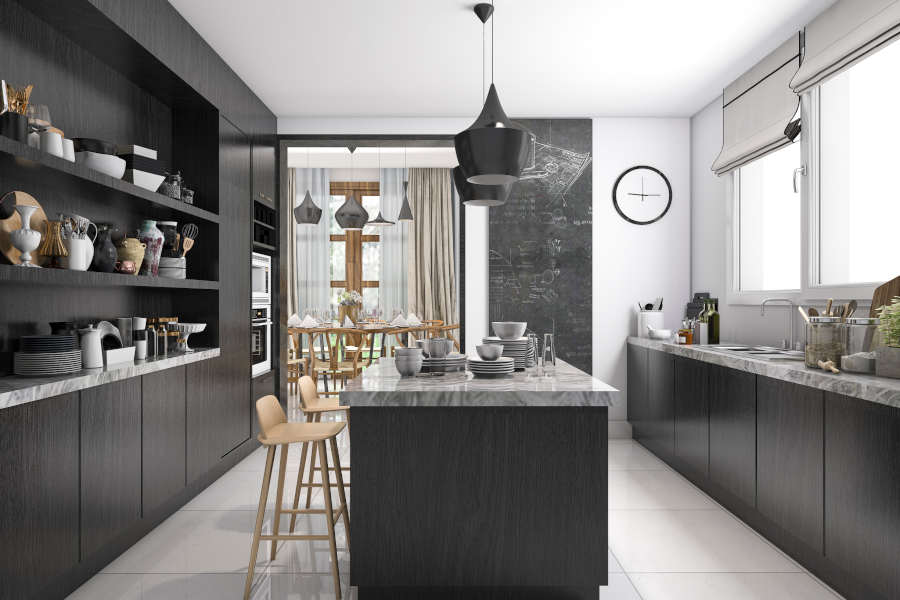 Open-plan kitchen and living spaces create more room to move around the home. However, these types of renovations require a lot of work.
Open-plan kitchen and living spaces create more room to move around the home. However, these types of renovations require a lot of work.
Ensure you’ve got at least 75 cm of clearance underneath your countertops and kitchen sink so you can roll beneath to use the space without twisting your body.
Kitchen storage can be challenging for wheelchair users who can’t reach the upper shelves. Low-lying cabinets with pull-out draws should comprise the bulk of your storage. Stow common everyday items on your countertops or inside the stove and fridge.
Invest in a wide, side-by-side refrigerator rather than a tall, slender model. Another option is the long chest-style fridge which you open from the top.
Look for an oven with easily accessible front panels to adjust the temperature. Many wheelchair users struggle to see inside their pots while cooking. Installing mirrors above the stovetop lets you check on your food.
Outdoors
 Ensure paths are at least 90cm wide to make enough room for a wheelchair. Uneven paved surfaces like brick, grass, and gravel create too much resistance for everyday use. Instead, aim for a smooth, flat surface such as hardwood decks and concrete driveways.
Ensure paths are at least 90cm wide to make enough room for a wheelchair. Uneven paved surfaces like brick, grass, and gravel create too much resistance for everyday use. Instead, aim for a smooth, flat surface such as hardwood decks and concrete driveways.
If your concrete paths look a little worse for wear, patch the cracks to smooth down the surface again. Prune back any overgrown plants that have obstructed your pathways.
Install ramps over any exterior steps or bumps—again, aim for at least 90 cm wide. Keep a few portable ramps handy for when you encounter non-wheelchair-accessible areas out in public or visit a family member’s home. These user-friendly mobile modifications pack down small and set up quickly, especially when help is on hand.
Install adequate lighting so you can access your home after dark. A motion-sensor floodlight with around 7,000-8,000 lumens is ideal. Putting timers on your sprinkling system will negate the need to go outside and adjust the settings.
Staircases
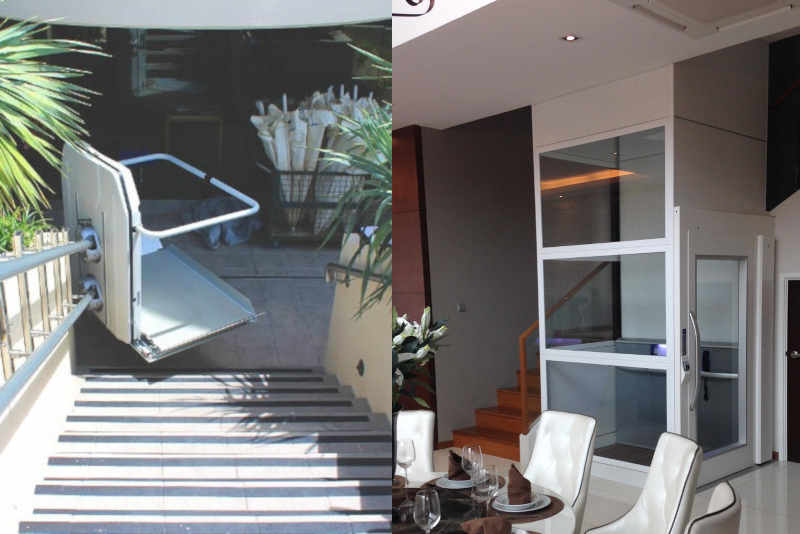 A single-storey home is ideal for a wheelchair user. However, hope is not lost if you’ve already got a two-storey (or taller) home. A wheelchair user can look at installing a stair lift (suitable for both indoors or outdoors) or residential elevator to travel between floors on a multi-storey home.
A single-storey home is ideal for a wheelchair user. However, hope is not lost if you’ve already got a two-storey (or taller) home. A wheelchair user can look at installing a stair lift (suitable for both indoors or outdoors) or residential elevator to travel between floors on a multi-storey home.
The stair lift has the wheelchair user roll into a custom-built platform, which travels up the staircase via a small electrical engine. While it’s often the cheaper option, it’s also slower, less aesthetically pleasing, and may reduce the value of your home.
A home elevator functions in much the same way as a typical commercial lift. The wheelchair user rolls inside, selects the desired floor, and rolls out upon arrival. Home lifts can be built to blend in with a contemporary home and add value to your property (they appeal to disabled and non-disabled buyers alike).
Home modification funding support
The Federal Government funds a range of programs to support people with disabilities.
- My Aged Care offers a home modification subsidy for eligible Australians over the age of 65. The support covers a broad range of works, including wheelchair accessibility modifications.
- Home Care Packages are intended to help older Australians continue living in their own homes. While most services relate to everyday care, there are some home modification entitlements.
- The Commonwealth Home Support Program can help seniors with low-level assistance, including minor home modifications.
Enjoy easy access to your upper floors with a home lift from AXIS Lifts
A wheelchair shouldn’t mean you lose access to the upper storeys of your house.
AXIS Lifts can provide a fully-customised, modern residential elevator to reconnect you with the rest of your home.
Boasting 94 years of combined industry experience, we’re Queensland’s leading commercial and residential lift supplier we can help restore your independence at an affordable price.
Give our customer service team a call today to organise a free, obligation quote.

